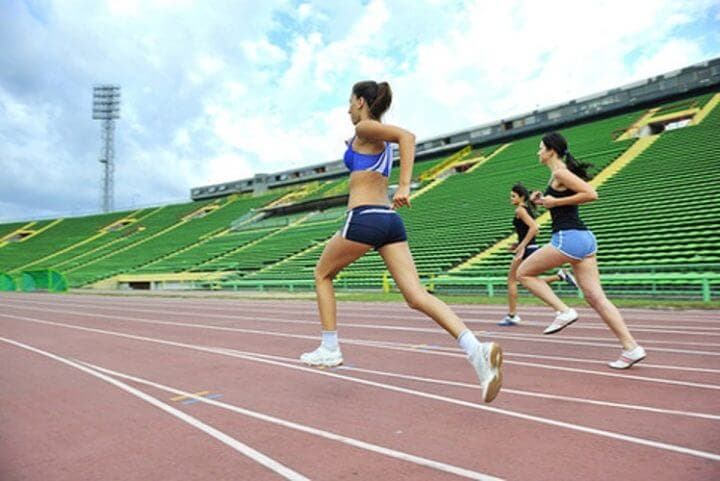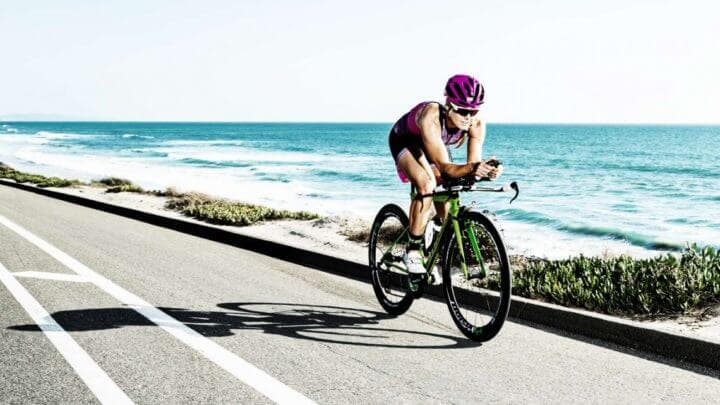The heart rate zone for burning fat is one of the most pervasive myths in the fitness industry, and it’s just not going to go away. There are magazines that regularly promote the importance of training in this area to burn fat more effectively, and there are even cardio machines all over the world that have some kind of sticker with a clear and visible image on it.
The idea is that by keeping your heart rate in the so-called fat burning zone , which is roughly 55-65% of your Maximum Heart Rate, you will be able to burn more fat than when you are in the most intense moment of exercise. However, apparently, the fat burning zone is misleading, and there is a lot of misinformation about it.
Find out why the Fat Burning Zone is a myth and learn how to make the most of your workouts to burn fat optimally , if that’s your goal.

Ultimate Guide to the Fat Burning Zone
1. What is the fat burning zone?
To understand the myth about the best zone to burn fat , it is necessary to understand how the body uses energy during exercise.
To simplify the explanation, during exercise your body extracts energy from two places: from fat reserves and from glycogen, the latter being responsible for storing carbohydrates in the muscles and in the liver. The fat burning zone was conceived as the zone with the lowest intensity of exercise . Therefore, more fat is burned when the body uses fat for fuel.

2. Can intense exercise burn fat?
In the 50% of the maximum heart rate zone, the body burns a ratio of 60% fat and 40% glycogen. And in 75%, the proportion is 35% and 65%. At even higher intensities, the ratio is even lower.
Knowing this, the question may arise: Why train harder if you burn little fat? The reason is that the goal is not really to burn fat, but to expend calories and more calories are burned when doing a high intensity workout.
For example, in a study in which the 30-minute training for a high intensity group (75%) was compared to a low intensity one (50%) it was seen as:
- The high intensity group burned twice as many calories, specifically 200 versus 400 calories.
- Only a lower percentage of fat was burned with increasing exercise intensity from 50 to 75%.

3. How many calories are burned with high intensity exercise?
Exercising at a low intensity burns very few calories, while an exercise session carried out vigorously, such as HIIT training, can result in a metabolic disturbance that burns calories after completing the training, known as the post-workout effect. combustion.
In a study by Christopher Scott of the University of Southern Maine , total calorie burning was compared with low- and high-intensity exercise. This study examined a group of cyclists at low intensity and at a constant speed for 3.5 minutes. On the other hand, the high intensity group was required to do 3 sprints of 15 seconds faster than they could.
The result was quite significant with respect to calorie loss: the cyclists group burned 29 calories compared to 4 calories for the sprint group during exercise, but, when considering the calories burned after exercise, or the afterburner effect, the numbers were very different: 39 calories for the cycling group versus 65 calories burned for the sprint group.
In addition, it must also be taken into account that the duration of the training sessions of the cycling group were 5 times greater than that of the sprint group (3.5 minutes versus 45 seconds).

4. Does it make sense to train at low intensity to burn fat?
While low intensity exercise certainly has its place within an exercise routine, the fat burning zone idea is not an effective approach. It is the same as popular belief to get up early in the morning on an empty stomach to do low intensity cardio to burn fat.
For busy people, interval training and circuit training are more efficient to burn more calories in a short time , thereby burning more fat.

Conclution
In general, he recommends not depending on low intensity exercises to burn fat; however, this will help you maintain muscle, stay fit, modestly increase your metabolism, and burn some fat. Also, it is a scientific fact that you must consume fewer calories than you burn to lose fat.
Nutrition has a much more powerful impact on this equation, and should therefore be the main factor in burning fat .
Reference
- Perry, M. The Fat Burning Zone Myth: Don’t Be Fooled. For Builtlean [Revised May 2017]
